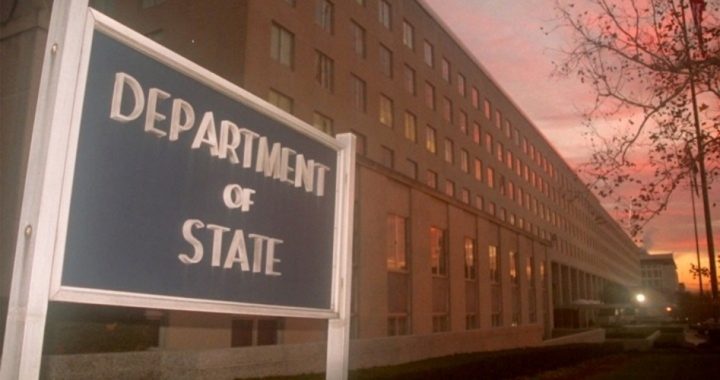
Betting the farm on an exorbitant social media campaign, the State Department doled out more than $630,000 to boost Facebook “likes” for four of the pages on its website, according to a new report by the agency’s inspector general (IG).
The program was launched after the department ramped up its presence on social media by writing blogs, setting up Twitter accounts, launching Facebook pages, and utilizing other Web-marketing efforts to lure attention from foreign audiences. A post on the State Department’s official website acknowledged that the Bureau of International Information Programs (IIP), which blueprinted the strategy, was not designed to engage domestic users, but to provide the “places, content, and infrastructure needed for sustained conversations with foreign audiences” to bolster the country’s reputation abroad:
IIP supports both physical and virtual places, including approximately 820 American Spaces around the world, as well as a growing social media community that numbers over 22 million followers. Content includes publications, video, and U.S. expert speakers, who engage foreign audiences both in person and through virtual programs. IIP manages the infrastructure for all embassy and consulate websites, translations of public remarks by the President and Secretary, and internal websites serving field public diplomacy officers. [Emphasis in original.]
The marketing effort, which launched its initiatives between 2011 and March 2013, elevated the agency’s fan numbers for each of the four pages from 100,000 to more than 2 million — and to 450,000 on Facebook’s foreign-language pages — the report asserted. However, responding to the idea of the campaign’s purported “success,” many employees said the State Department was “buying fans,” and that its efforts were largely exaggerated. Such claims stem from the idea that the bureau was accruing “fans” who may have clicked once on an ad but have never committed any further engagement.
The IG report discovered that the number of Facebook users who “actively engaged” with each page was meager, with a mere two percent “liking,” sharing, or commenting on any entry within the previous week. Furthermore, the effort became even less effective in September 2012, when Facebook changed its format for news feeds.
The modification made it so the department would not have to pay for advertisements to market to users who have already “liked” its Facebook pages. “This change sharply reduced the value of having large numbers of marginally interested fans,” the report explained. For example, a post on cyber censorship this March reached about 234,000 Facebook users on its first day, but only 20,000 would have seen the post on their news feed without paid advertising.
The IG report heavily emphasized the fact that the State Department’s Web-marketing outreach lacks a strategy for targeting the most advantageous audience. “The absence of a Department wide PD [public diplomacy] strategy tying resources to priorities directly affects IIP’s work,” the report affirmed. “Fundamental questions remain unresolved. What is the proper balance between engaging young people and marginalized groups versus elites and opinion leaders?”
The IG stressed that the State Department seemed to be focused primarily on increasing its own popularity, rather than relaying meaningful information that addresses features of public diplomacy. The report explained:
In recent months, IIP leadership instructed social media staff members to put more policy-oriented information on their sites. However, page managers were concerned that too much policy material, especially if it is not related closely to the primary interest of the page fans, would drive away their youthful audience and cause their fan numbers and engagement statistics to drop. They felt caught between conflicting directives. In March 2013, IIP was developing a social media policy strategy. This kind of document is essential to clarify the goals of IIP’s social media efforts, acknowledge the tradeoff between seeking high numbers of fans and engaging with foreign audiences, and find the right balance between youth and elite audience engagement.
The IG offered a number of recommendations, including one that the bureau decrease spending by directing its advertising on public diplomacy measures and not on boosting the number of Facebook “likes” on its pages.
State Department spokeswoman Jen Psaki noted July 3 that the agency has greatly reduced spending on the social media campaign and that it plans to implement many of the IG’s recommendations. Psaki added that the IIP now spends only $2,500 per month on its online marketing efforts: “I think that’s a clear indication we’ve taken the recommendations seriously and put changes in place.”
Still, regardless of the efficacy of the State Department’s Web-marketing endeavors, the question remains: Should federal agencies be spending any amount of taxpayer dollars on social media? One might suggest that, in the scheme of things, the dollar amount and effectiveness of these programs are irrelevant, due to the fact that the role of government does not entail boosting its prestige in the social media world.
Photo: AP Images



